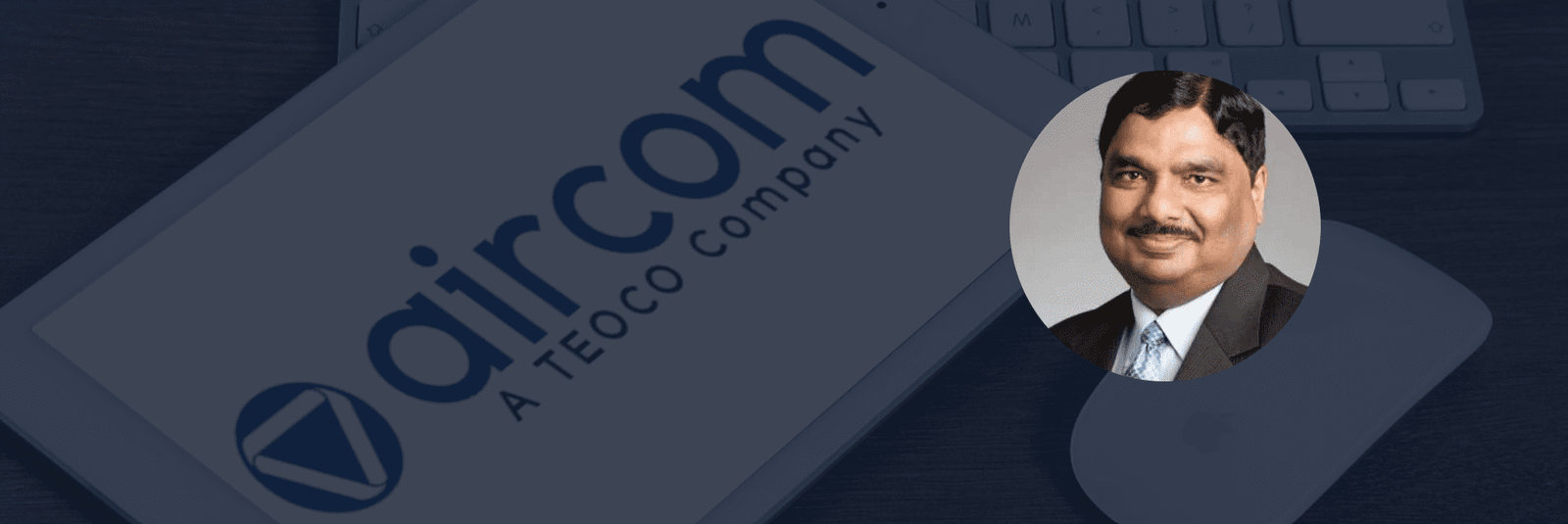Overcoming 5G Monetization Challenges

An Interview with Atul Jain – Overcoming 5G Monetization Challenges
In this exclusive interview, we sit down with Atul Jain, CEO of Aircom, a leader in telecom software solutions. With the rapid rollout of 5G technology transforming potential into performance across industries, the challenges of monetizing this new wave of connectivity are more complex than ever. Today, Atul shares his expert insights on navigating these challenges.
Welcome, Mr. Jain. As we witness the roll-out of 5G, there’s a lot of excitement about its potential. However, monetizing this technology remains a challenge for many operators. Can you share your insights on this issue?
Atul Jain: Thank you for having me. Indeed, while 5G presents tremendous opportunities, monetizing it effectively is a complex issue that many operators are grappling with. The primary challenges stem from the substantial investments required for 5G deployment, including infrastructure upgrades and spectrum costs.
Can you elaborate on these investment challenges?
Atul Jain: Certainly. The deployment of 5G technology requires a complete overhaul of existing network infrastructure. This includes new antennas and updated network equipment capable of handling increased data loads and speeds. Additionally, the cost of acquiring spectrum rights is significant. These factors combine to create a high financial barrier to entry, which can delay the return on investment.
Beyond the financial aspects, are there other challenges that operators face?
Atul Jain: Yes, there are several. One of the key issues is the need for new business models. 5G opens up possibilities in areas like IoT, smart cities, and real-time automation, but capitalizing on these requires operators to innovate beyond traditional data and voice services. Developing these new models and convincing markets of their value is no small task.
What about market readiness? How significant is that in terms of impacting 5G monetization?
Atul Jain: Market readiness is crucial. The full benefits of 5G can only be realized when there is widespread adoption of 5G-enabled devices and when end-users are actually ready to pay a premium for enhanced services. Currently, the penetration of such devices is not uniform across different markets. Moreover, consumer willingness to pay for 5G services has not yet aligned with the investment scales.
5G uses different spectrum bands, each offering unique characteristics, how do see these variations affect the monetization aspects?
Atul Jain: Each 5G spectrum band, from low to high, demands distinct monetization strategies. The high-band, or millimeter wave, offers substantial capacity and speed but limited coverage, ideal for dense, urban settings and specific high-demand applications like industrial IoT and immersive tech. Likewise low-band spectrum delivers broad coverage at lower speeds, ideal for extensive network coverage but less suitable for high-demand applications. Mid-band spectrum strikes a balance, providing adequate coverage and capacity, well-suited for urban areas with high data bandwidth requirements.
The monetization strategy needs to align these technical capacities with appropriate service offerings and innovative business models, like fixed wireless access or AR/VR experiences, ensuring that customer needs and pricing structures are optimally matched to the capabilities of each of these spectrum bands.
Given these challenges, how is Aircom assisting operators in navigating this landscape?
Atul Jain: At Aircom, we are involved in developing solutions that ease the burden of 5G deployment. Our software helps optimize network performance and manage costs more effectively. We also provide tools that allow operators to design 5G network and simulate new 5G-based services more efficiently, thereby shortening the time to market and helping to create compelling use cases that can drive consumer adoption.
Looking forward, what strategies do you believe will be key for operators to successfully monetize 5G?
Atul Jain: Operators will need to focus on collaboration and partnerships. For instance, working with municipalities on smart city projects or with enterprises on industrial IoT applications can open new revenue streams. Additionally, operators must continue to innovate in customer experience and service offerings, ensuring they remain competitive and relevant in a rapidly evolving digital landscape.
Mr. Jain, thank you for sharing your valuable insights into the complex issue of monetizing 5G. It seems clear that while the challenges are significant, there are also ample opportunities for those prepared to innovate and invest in new business models.
Atul Jain: Absolutely, and thank you for having me. The journey to 5G monetization is just beginning, and it promises to reshape not just telecom but many other industries as well.


